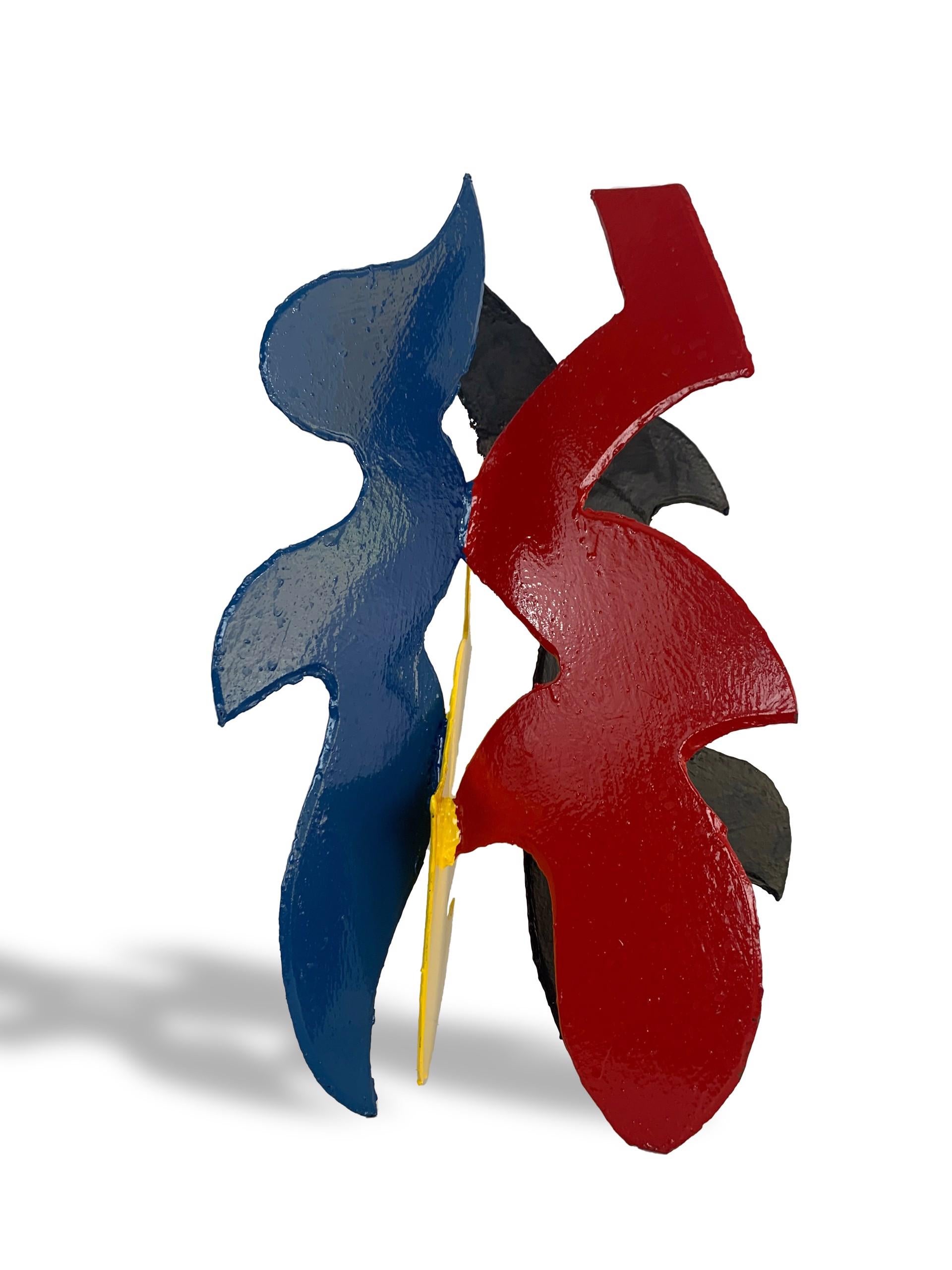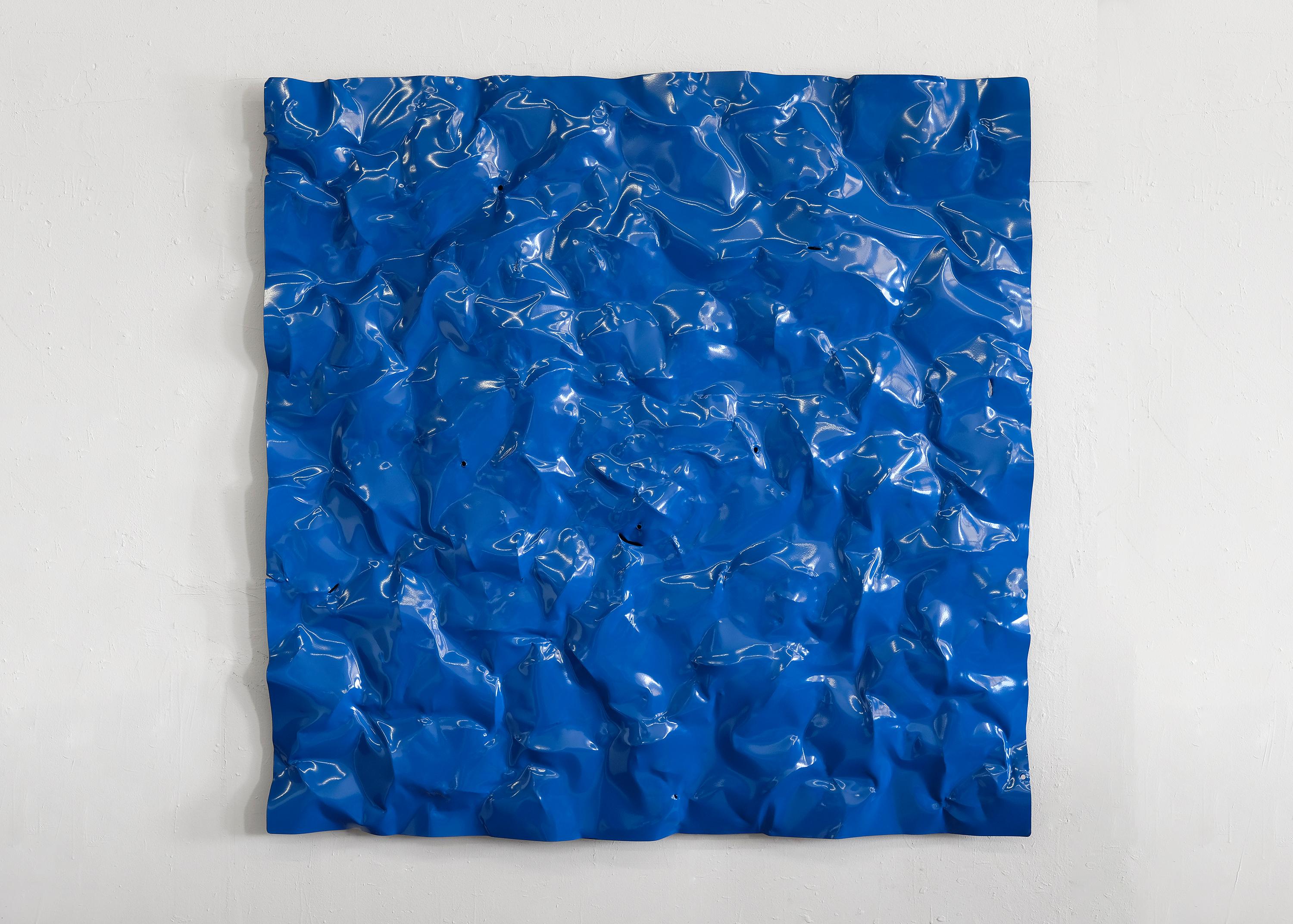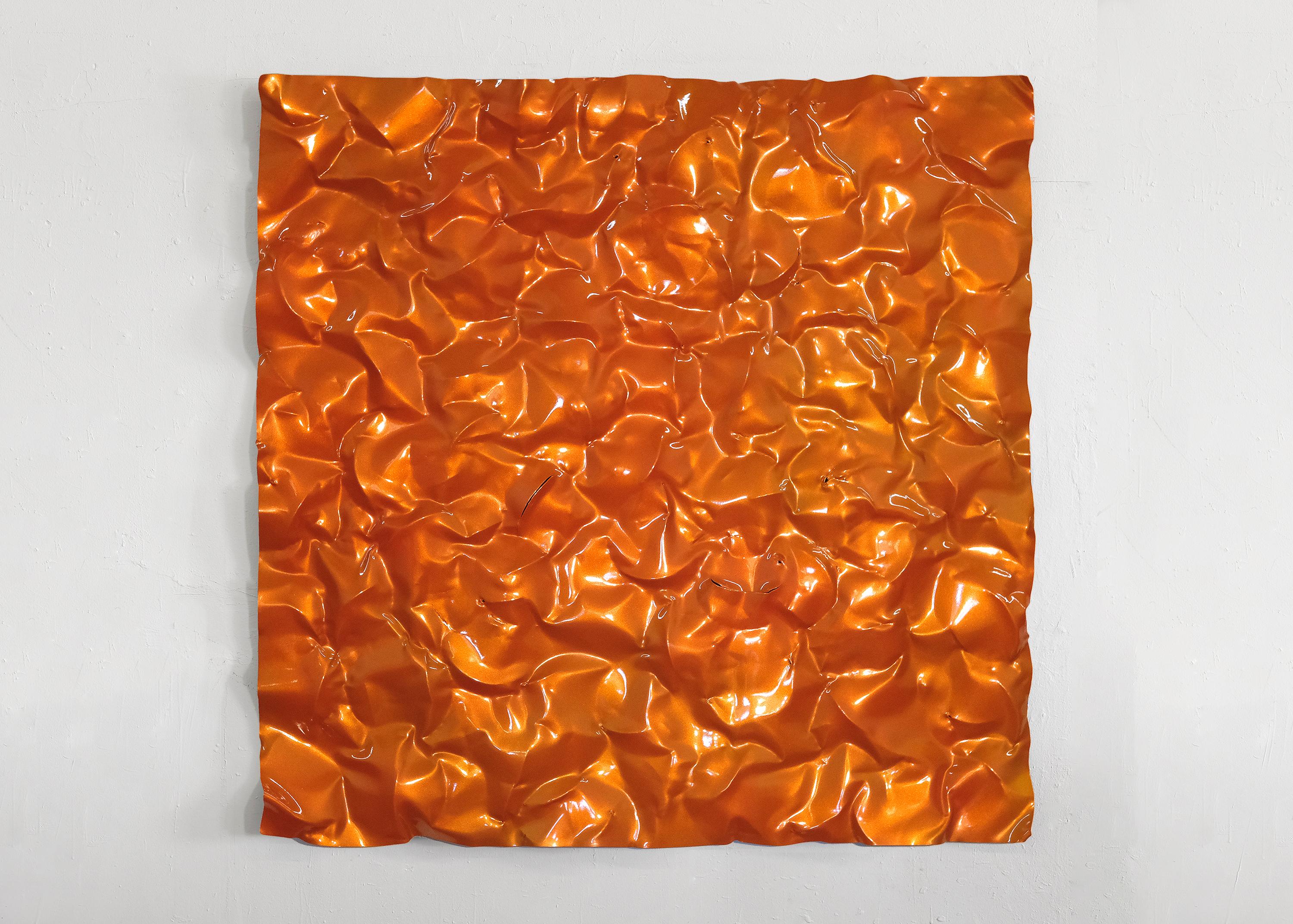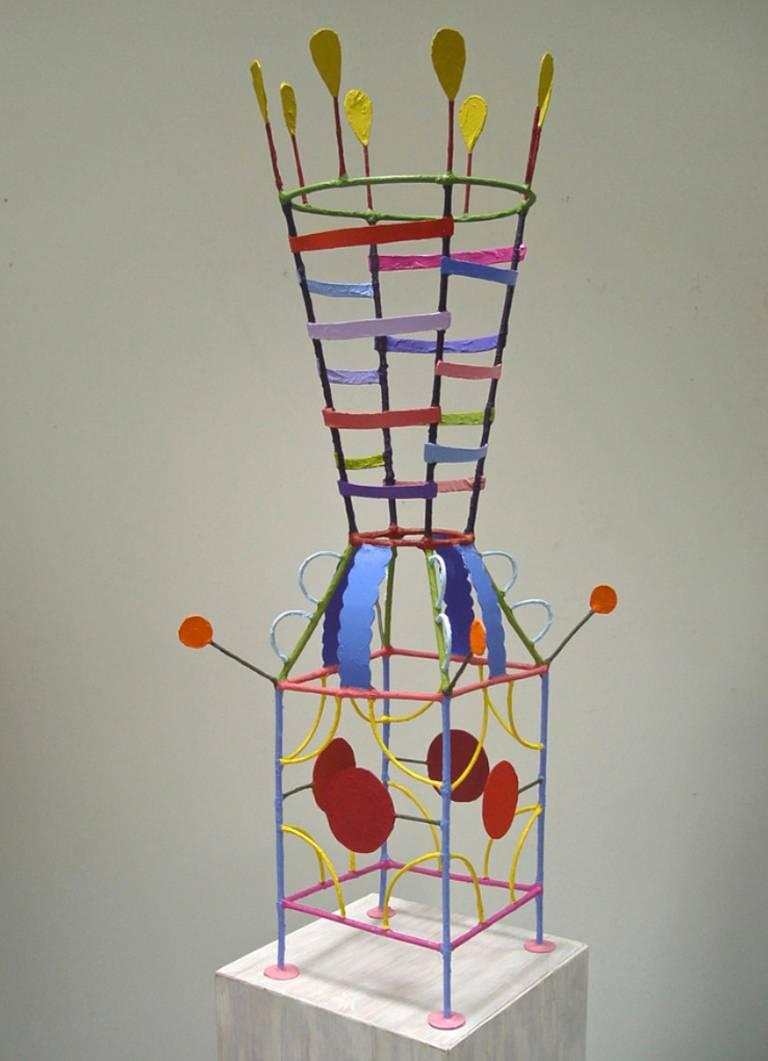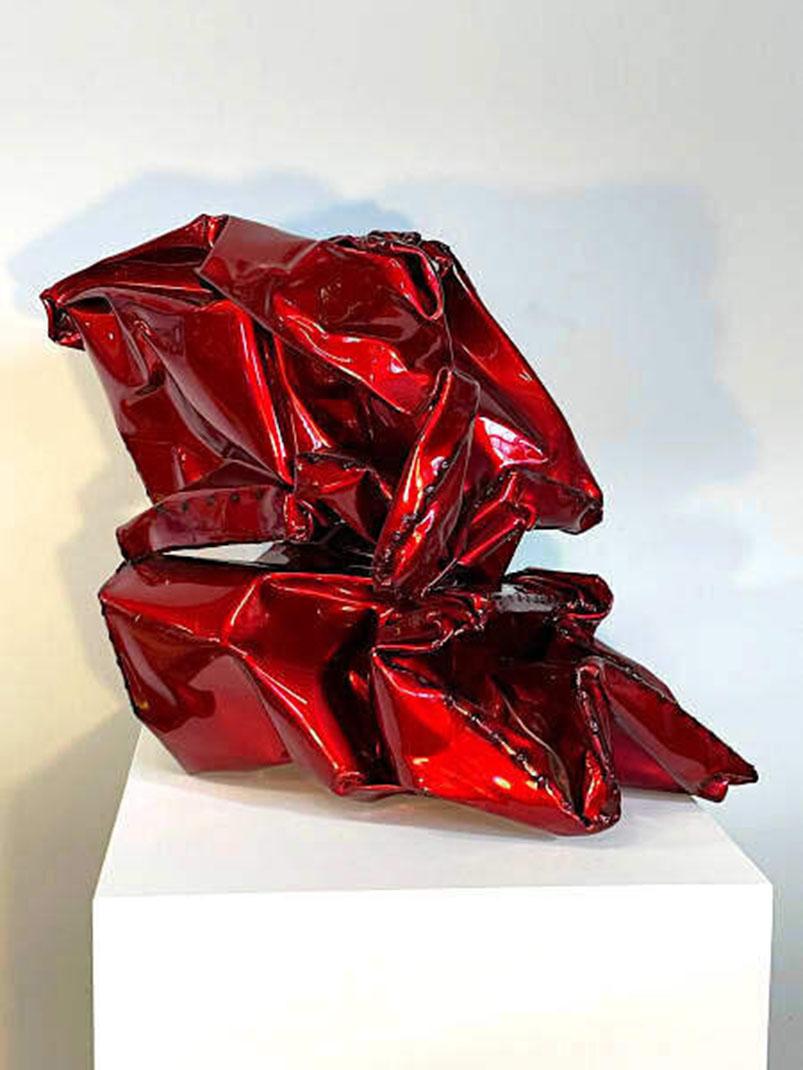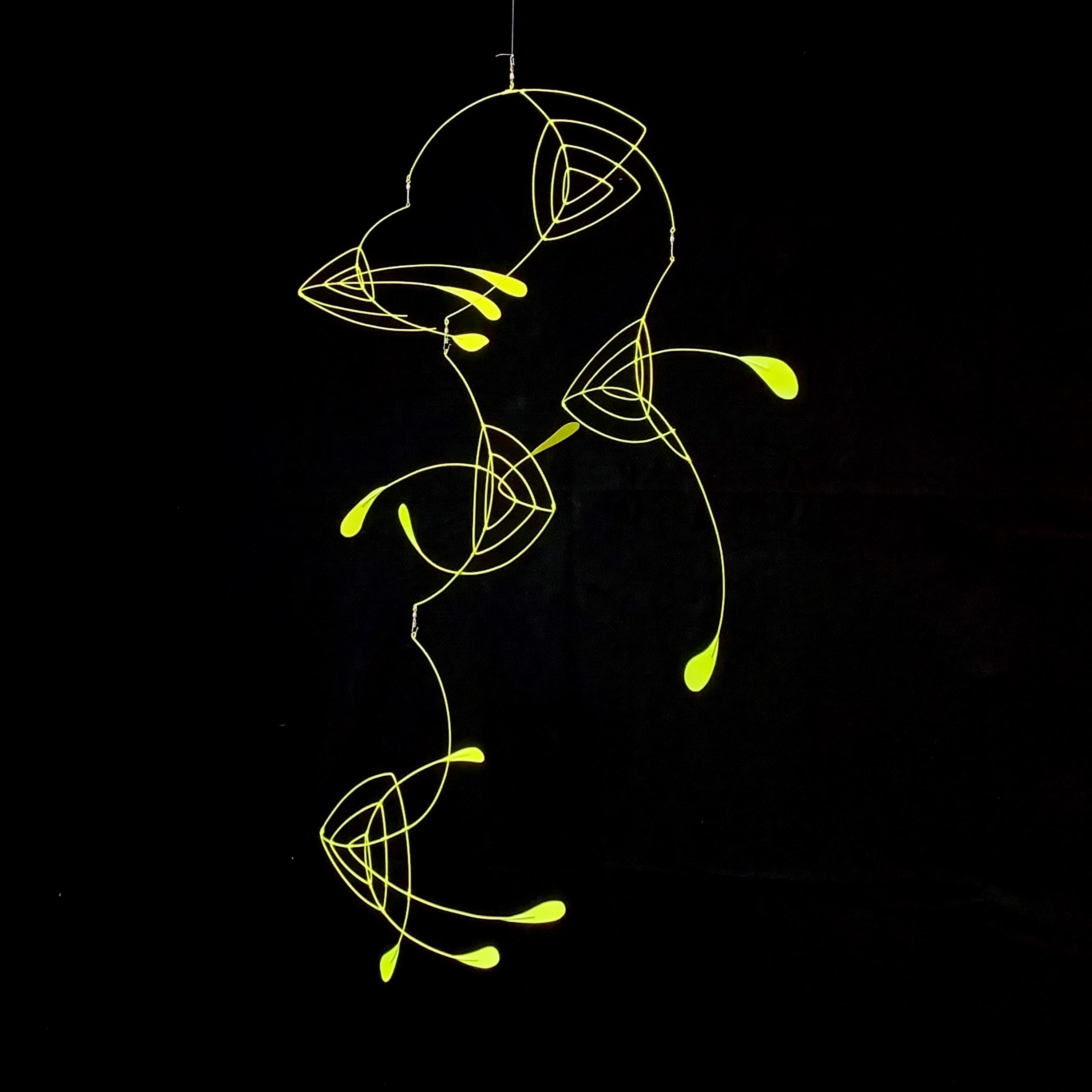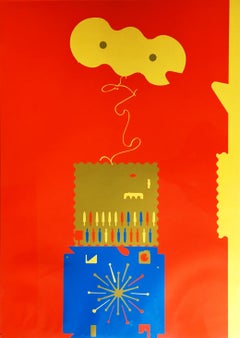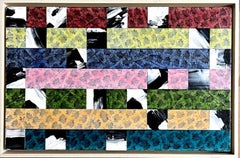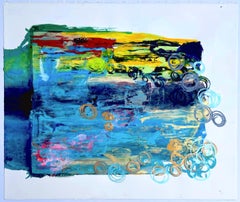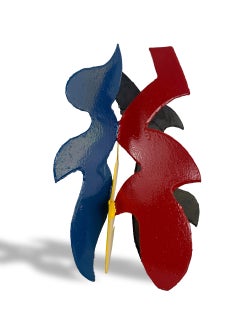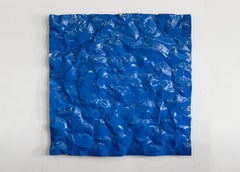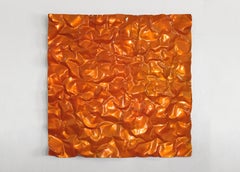Want more images or videos?
Request additional images or videos from the seller
1 of 2
Ray GearyBruce # 92016
2016
$1,500
£1,132.01
€1,295.98
CA$2,115.50
A$2,322.55
CHF 1,211.68
MX$28,106.12
NOK 15,186.53
SEK 14,309.71
DKK 9,674.14
About the Item
Ray Geary
Bruce #9, 2016
Steel
Incised signature, title and date on the underside
10 x 7 inches
Bruce # 9 is one of ten unique sculptures that popular young sculptor Ray Geary made exclusively for the Whitney Museum. Below is how the Museum described the series:
These fanciful totemic objects, lovingly named Bruce, are made of steel purchased from a scrap metal yard in the Meatpacking District, just a short walk from the Whitney's 99 Gansevoort Street location. They represent the neighborhood's industrial past and the change and rebirth that it, and the rest in New York, is constantly going through.
Ray Geary (b. 1983) is a self taught mixed media artist whose large scale work in resin and acrylic feature graphic abstraction and iconic, obtuse faces in equal measure. His process-driven works being with pours, which become the subjects of his compositions, seemingly acting of their own accord. Blending European traditions of "primitivism" and a pop-inspired sensibility toward the abject, his anthropomorphized spills and puddles offer a playful investigation into materiality.
- courtesy of the artist
Provenance:
Acquired directly from the Whitney Museum in Gansevoort in 2016.
About the Seller
5.0
Platinum Seller
Premium sellers with a 4.7+ rating and 24-hour response times
Established in 2007
1stDibs seller since 2022
451 sales on 1stDibs
Typical response time: 2 hours
- ShippingRetrieving quote...Shipping from: New York, NY
- Return Policy
Authenticity Guarantee
In the unlikely event there’s an issue with an item’s authenticity, contact us within 1 year for a full refund. DetailsMoney-Back Guarantee
If your item is not as described, is damaged in transit, or does not arrive, contact us within 7 days for a full refund. Details24-Hour Cancellation
You have a 24-hour grace period in which to reconsider your purchase, with no questions asked.Vetted Professional Sellers
Our world-class sellers must adhere to strict standards for service and quality, maintaining the integrity of our listings.Price-Match Guarantee
If you find that a seller listed the same item for a lower price elsewhere, we’ll match it.Trusted Global Delivery
Our best-in-class carrier network provides specialized shipping options worldwide, including custom delivery.More From This Seller
View AllMaquette for Laureate (unique sculpture)
By Seymour Lipton
Located in New York, NY
Seymour Lipton
Maquette for Laureate, ca. 1968-1969
Nickel silver on monel metal
Unique
18 × 8 1/2 × 7 inches
Marlborough-Gerson Gallery, New York
Acquired from the above by the previous owner, 1969
thence by descent
Christie's New York: Monday, June 30, 2008 [Lot 00199]
Acquired from the above Christie's sale This unique sculpture by important Abstract Expressionist sculptor Seymour Lipton is a maquette of the monumental sculpture "Laureate" - one of Lipton's most iconic and influential works located on the Riverwalk in downtown Milwaukee, Wisconsin. Laureate is a masterpiece that was commissioned by the Allen-Bradley Company in memory of Harry Lynde Bradley and as an enhancement for the newly constructed Performing Arts Center. It is located on the east bank of the Milwaukee River at 929 North Water Street. The Bradley family in Milwaukee were renowned patrons of modernist sculpture, known for their excellent taste who also founded an eponymous sculpture park. For reference only is an image of the monumental "Laureate" one of Milwaukee's most beloved public sculptures. According to the Smithsonian, which owns a different unique variation of this work, "The full-size sculpture Laureate was commissioned by the Marcus Center for the Performing Arts in Milwaukee. In the initial drawings, Seymour Lipton combined details from the architectural plan with a wide variety of images, ranging from musical instruments to a lighthouse on the island of Tobago. He transformed the basic shapes from these sketches into a welded sculpture, which evokes a figure composed of columns, harp strings, and coiled rope. Lipton created this piece to celebrate achievement in the arts. The dramatic silhouette commands your attention, reflecting the title Laureate, which means worthy of honor and distinction. The final version of the piece is over twelve feet high and stands out against the pale, flat buildings of the arts center.,,"
Provenance
Marlborough-Gerson Gallery, New York
Acquired from the above by the previous owner, 1969
thence by descent
Christie's New York: Monday, June 30, 2008 [Lot 00199]
Acquired from the above Christie's sale
About Seymour Lipton:
Born in New York City in 1903, Seymour Lipton (1903-1986) grew up in a Bronx tenement at a time when much of the borough was still farmland. These rural surroundings enabled Lipton to explore the botanical and animal forms that would later become sources for his work. Lipton’s interest in the dialogue between artistic creation and natural phenomena was nurtured by a supportive family and cultivated through numerous visits to New York’s Museum of Natural History as well as its many botanical gardens and its zoos. In the early 1920s, with the encouragement of his family, Lipton studied electrical engineering at Brooklyn Polytechnic Institute and pursued a liberal arts education at City College. Ultimately, like fellow sculptor Herbert Ferber, Lipton became a dentist, receiving his degree from Columbia University in 1927. In the late 1920s, he began to explore sculpture, creating clay portraits of family members and friends.
In addition to providing him with financial security, dentistry gave Lipton a foundation in working with metal, a material he would later use in his artwork. In the early 1930s, though, Lipton’s primary sculptural medium was wood. Lipton led a comfortable life, but he was also aware of the economic and psychological devastation the Depression had caused New York. In response, he generally worked using direct carving techniques—a form of sculpting where the artist “finds” the sculpture within the wood in the process of carving it and without the use of models and maquettes. The immediacy of this practice enabled Lipton to create a rich, emotional and visual language with which to articulate the desperation of the downtrodden and the unwavering strength of the disenfranchised. In 1935, he exhibited one such early sculpture at the John Reed Club Gallery in New York, and three years later, ACA Gallery mounted Lipton’s first solo show, which featured these social-realist-inspired wooden works. In 1940, this largely self-taught artist began teaching sculpture at the New School for Social Research, a position he held until 1965.
In the 1940s, Lipton began to devote an increasing amount of time to his art, deviating from wood and working with brass, lead, and bronze. Choosing these metals for their visual simplicity, which he believed exemplified the universal heroism of the “everyman,” Lipton could also now explore various forms of abstraction. Lipton’s turn towards increasing abstraction in the 1940s allowed him to fully develop his metaphorical style, which in turn gave him a stronger lexicon for representing the horrors of World War II and questioning the ambiguities of human experience. He began his metal work with cast bronze sculptures, but, in 1946, he started welding sheet metal and lead. Lipton preferred welding because, as direct carving did with wood, this approach allowed “a more direct contact with the metal.”[ii] From this, Lipton developed the technique he would use for the remainder of his career: “He cut sheet metal, manipulated it to the desired shapes, then joined, soldered, or welded the pieces together. Next, he brazed a metal coating to the outside to produce a uniform texture.”[iii]
In 1950, Lipton arrived at his mature style of brazing on Monel metal. He also began to draw extensively, exploring the automatism that abstract expressionist painters were boasting at the time. Like contemporaries such as Jackson Pollock, Lipton was strongly influenced by Carl Jung’s work on the unconscious mind and the regenerative forces of nature. He translated these two-dimensional drawings into three-dimensional maquettes that enabled him to revise his ideas before creating the final sculpture.The forms that Lipton produced during this period were often zoomorphic, exemplifying the tension between the souls of nature and the automatism of the machine.
In the years following the 1950s, Lipton’s optimism began to rise, and the size of his work grew in proportion. The oxyacetylene torch—invented during the Second World War—allowed him to rework the surfaces of metal sculptures, thus eliminating some of the risks involved with producing large-scale finished works. In 1958, Lipton was awarded a solo exhibition at the Venice Biennale and was thus internationally recognized as part of a small group of highly regarded avant-garde constructivist sculptors. In 1960, he received a prestigious Guggenheim Award, which was followed by several prominent public commissions, including his heroic Archangel, currently residing in Lincoln Center’s David Geffen Hall.
A number of important solo exhibitions of his work followed at The Phillips Collection in Washington, DC (1964); the Milwaukee Art Center and University of Wisconsin, Milwaukee (1969); the Virginia Museum of Fine Arts in Richmond (1972); the Everson Museum in Syracuse, NY (1973); the Herbert E. Johnson Museum of Art of Cornell University in Ithaca, NY (1973); the National Collection of Fine Arts, Smithsonian Institution (now the Smithsonian American Art Museum) in Washington, DC (1978); and a retrospective in 1979 at The Jewish Museum in New York. In 1982 and 1984 alone, two exhibitions of his sculpture, organized respectively by the Mint Museum (Charlotte, NC) and the Hillwood Art Gallery of Long Island University (Greenvale, NY), traveled extensively across museums and university galleries around the nation. In 2000, the traveling exhibition An American Sculptor: Seymour Lipton was first presented by the Palmer Museum of Art of Pennsylvania State University in University Park. Most recently, in 2009, the Ackland Art Museum in Chapel Hill, NC mounted The Guardian and the Avant-Garde: Seymour Lipton’s Sentinel II in Context.
Since 2004, Michael Rosenfeld Gallery has been the exclusive representative of the Estate of Seymour Lipton and has presented two solo exhibitions of his work—Seymour Lipton: Abstract Expressionist Sculptor (2005) and Seymour Lipton: Metal (2008). In 2013, Michael Rosenfeld Gallery presented Abstract Expressionism, In Context: Seymour Lipton, which included twelve major sculptures by the artist, along with works by Charles Alston, Norman Bluhm, Beauford Delaney, Willem de Kooning, Jay DeFeo, Michael Goldberg, Adolph Gottlieb, Hans Hofmann, Lee Krasner, Norman Lewis, Conrad Marca-Relli, Boris Margo, Alfonso Ossorio, Richard Pousette-Dart, Milton Resnick, Charles Seliger...
Category
1960s Abstract Expressionist Abstract Sculptures
Materials
Metal, Silver
Untitled
By Harold Town
Located in New York, NY
Harold Town
Untitled, 1973
Silkscreen and Lithograph. Pencil Signed. Dated. Numbered.
Hand signed, dated and numbered by the artist on the front
39 1/4 × 27 1/2 inches
Unframed
Pencil signed and numbered from the limited edition of 55. De-accessioned from the Sears, Robuck & Co. art collection
Harold Town (1924-1990) has been dubbed the "Picasso of Canada" for his ever-changing aesthetic and perennial creativity, and he exhibited widely throughout Canada. He is best known as a founding member of the Painters Eleven, having coined the term for this artistic group himself. The name refers to the eleven Abstract Expressionist artists who banded together in Toronto between 1953 and 1960: Tom Hodgson, Jack Bush, William Ronald, Alexandra Luke, Oscar Cahén, Jock MacDonald, Ray Mead...
Category
1970s Abstract Abstract Prints
Materials
Lithograph, Screen
Face Value
By Richard Kalina
Located in New York, NY
Richard Kalina
Face Value, 1992
Collage and mixed media (flasche) and acrylic on laid paper painted on canvas
Signed on the verso; also bears Max Protech Gallery Label, Unique
Frame included
Hand signed, dated and titled on the verso with original label from the legendary Max Protech Gallery, as well as Christie's NYC labels. A dazzling mixed media painting that looks so much better in person.
Provenance
Max Protech Gallery
Christie's Inc (see labels)
Measurements:
Frame:
15.5 x 23.5 x 1 inch
Artwork:
15 x 23 inches
About Richard Kalina:
Richard Kalina was born in 1946 and studied at the University of Pennsylvania. He began exhibiting in 1969 and has regularly shown his work in museums and galleries, both nationally and internationally. ... Richard Kalina is Professor of Art at Fordham University in New York, where he teaches studio art and art history. This is a gorgeous work that would look beautiful in any home or office.
His works are included in museum collections such as the Arkansas Art Center, Grey Art Gallery, Guild Hall Museum, Fogg Art Museum, Indianapolis Museum of Art, Milwaukee Art...
Category
1990s Abstract Abstract Paintings
Materials
Canvas, Mixed Media, Acrylic, Laid Paper, Vinyl
Untitled Abstraction
Located in New York, NY
Leslie B. Weissman
Untitled abstraction, 2016
Acrylic and mixed media painting on paper
15 × 18 inches
Pencil signed and dated by the artist on the lower left front
Unframed
Biography:
Leslie B. Weissman (b. 1966, NYC)
Education:
Hobart and William Smith Colleges BA 1988 Art and Economics
New York University / Tisch MPS 1991
Recent and Upcoming Exhibitions:
PFLAG Pride In Bloom Exhibit and benefit Auction October 2020
Blue Door Gallery - Yonkers, NY Group Show, Global Expressions September 12, to October 24, 2020
Blue Door Gallery - Yonkers, NY Group Show, Summer Blues July 24, to August 29, 2020
Blue Door Gallery - Yonkers,, NY Group Show, Kinda Blue October-November 2018
Riverfront Art Gallery - Yonkers,, NY Group Show, Womantide March-April 2019
Blue Door Gallery - Yonkers,, NY Group Show, Kinda Blue October-November 2018
Morgan Stanley Corporate Headquarters - Purchase, NY September-October 2018
The Art Closet Gallery March 2018 Selected Works
Artist in Residence Chappaqua Performing Arts Center 2018 New Castle Board Inauguration conducted by President Bill Clinton
Katonah Museum AA at NWHC September 2017-March 2018
Left Fields Gallery SAN LUIS OBISPO, CA - 12/18-1/17/16 FORM IS NOT DIFFERENT FROM EMPTINESS -
Curated by Ryan Schneider...
Category
2010s Abstract Abstract Paintings
Materials
Mixed Media, Acrylic
Untitled signed sculpture, from the collection of Dick Polich, Tallix Foundry
By Stephen Talasnik
Located in New York, NY
Stephen Talasnik
Untitled sculpture, from the collection of Dick Polich, Tallix Foundry, ca. 1997
Cast light metal
signed by the artist on the work (see close up photograph)
6 3/5 × 12 × 4 inches
Provenance
Estate of Dick Polich, founder of the legendary Tallix Foundry and Polich Art works Beacon, NY
Manufacturer
Stephen Talasnik at Tallix Foundry, Beacon, New York
This work is signed by the artist (see close up photograh)
Abstract metal sculpture
The work is lightweight so it is believed to be in aluminum or an aluminum alloy,
Provenance: acquired from the Estate of Dick Polich - founder of the legendary Tallix foundry and Polich Art Works.
Polich and Tallix fabricated significant sculptural works over many years, collaborating with such as, Willem de Kooning, Jeff Koons, Roy Lichtenstein, Frank Stella, Helen Frankenthaler, ERTE, Julian Schnabel, Richard Artschwager, Isamu Noguchi, Isaac Witkin...
Category
1990s Abstract Expressionist Abstract Sculptures
Materials
Metal
Bronze Sculpture to Isaac Bashevis Singer, Arts in Judaism Award signed Judaica
By Nathaniel Kaz
Located in New York, NY
Nathaniel Kaz
Bronze Sculpture to Isaac Bashevis Singer for Arts in Judaism Award, 1966
Bronze, Square wooden base, Metal tag
Signed and dated "66" to back of bronze portion of the w...
Category
1960s Abstract Expressionist Abstract Sculptures
Materials
Metal, Bronze
You May Also Like
Quatre
By David Hayes
Located in Fort Lauderdale, FL
David Hayes (1931 - 2013)
Quatre, 2005
Polychrome welded steel
19 x 11 x 10 in
Category
Early 2000s Contemporary Sculptures
Materials
Steel
Price Upon Request
#201
Located in Dallas, TX
cold rolled steel, blue powder coated wall sculpture
Category
2010s Abstract Abstract Sculptures
Materials
Steel
$4,800
#202
Located in Dallas, TX
cold rolled steel, sparkle orange metallic powder coated wall sculpture
Category
2010s Abstract Abstract Sculptures
Materials
Steel
$4,800
Queenie
By Tom Nussbaum
Located in New Orleans, LA
Tom Nussbaum is known for a variety of work including drawings, paper cuts, prints, sculpture, children’s books, animations, functional design objects, and site-specific commissions....
Category
2010s Abstract Abstract Sculptures
Materials
Steel
Raiser
Located in New York, NY
An outdoor sculpture made out of powder coated stainless steel. This sculpture is a rich, vibrant, and shiny red.
Rick Lazes is a three dimensional artist who works in a variety of media including wood, plaster, stainless steel, glass, plexiglass, and marble. Lazes’ first studio was heated by a coal potbelly stove...
Category
2010s Abstract Abstract Sculptures
Materials
Stainless Steel
Price Upon Request
Name Unknown
Located in New York, NY
Stainless Steel TIG Welding Rod, Aluminum, Fishing Accessories, Wire, Paint
Jeremy Bullis after David L. Bullis
Edition 1/5
Category
2010s Abstract Abstract Sculptures
Materials
Stainless Steel, Wire
